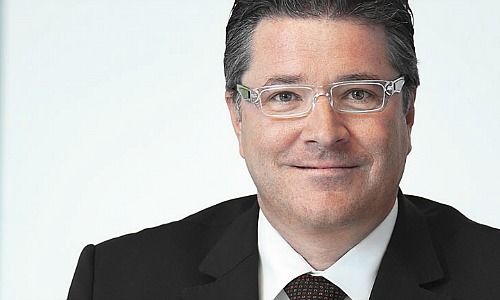What Can Private Investors Expect in 2017?
Chances are high that we won’t get bored in 2017 and that active management is getting even more important, Vontobel’s Daniel Brüesch says.
By Daniel Brüesch, Head Private Banking Investment Office, Vontobel
In the first scenario which we weight with 60 percent, if all goes well, only pro-growth measures will be implemented – a scenario that we are labelling «reflation – ‘Trumponomics’ works».
We already know some of the key points of Trump’s growth agenda. This leads us to conclude a scenario of reflation – a term that describes the rekindling of inflation. The U.S. will profit from the increase in public spending on infrastructure in the region of 1 trillion dollars.
Combined with the measures of corporate tax cuts from 35 to 15 percent and the reduction of excessive regulation on companies especially in the energy and financial services industries we at Vontobel believe that the economic growth will pick up in 2017.
Rising Yields Expected
Since the U.S. is currently enjoying almost full employment, wage growth is likely to gather momentum; this will probably push inflation above 3 percent, especially since productivity gains are minimal and companies are hardly likely to sacrifice their margins. In such a scenario, we therefore anticipate also three to four interest-rate hikes next year.
Generally speaking, we expect rising yields to have a dampening effect on emerging economies, also in Asia. At the same time, geopolitical tensions would be eased in the reflation scenario, allowing global trade to grow without restriction, as long as Trump don’t hamper the global trade with increasing import duties for example.
We believe that China would maintain almost constant economic growth which prevents its property bubble from bursting.
Stagflation if «Trumponomics» Fail
In our second scenario, which we at Vontobel think is less likely and refer to as «stagflation – ‘Trumponomics’ fails», the measures taken will not only promote growth, but potentially act as a brake as well.
In the scenario of stagflation – a combination of concurrent stagnation and inflation – infrastructure programmes and tax cuts are also implemented in the US with very little opposition.
At the same time, however, a number of points in Trump’s election manifesto are implemented, such as renegotiation of the NAFTA agreement, termination of other trading agreements, increase of import duties on goods from e.g. China, etc. which simultaneously act as a brake on economic growth.
Badly Affected
Global trade would be badly affected by the barriers to international trade erected by the US, which is particularly hard on China as the world’s biggest exporter. In this scenario, we also expect a relatively sharp drop in Chinese house prices. In addition, one of the major emerging-market companies would become insolvent. In our stagflation scenario, Europe would still benefit from the Juncker Plan to stimulate economic growth.
However, its positive effects would be neutralised by new trade barriers and the increasingly obvious tendencies towards the disintegration of the European Union.
Positioning Within Portfolio is Key
Relatively few details are known about the president-elect’s programme. Trump has already backtracked on some of his earlier statements. Political uncertainty is also growing in the euro zone given the important agenda facing the core EU countries such as Germany and France (both holding general elections in 2017).
We are also predicting a higher rate of inflation for the U.S. for the first time – irrespective of the economic climate – and therefore anticipate higher interest rates and yields as well.
Inflationary Pressure
We at Vontobel still prefer corporate credit and equities over government debt. The U.S. central bank is the key factor for the market for global credit. The bank is facing a tightening labor market and a president-elect who, supported by a unified Republican government, points towards fiscally induced growth.
The result is inflationary pressure and as a result a policy of cautious but still rising U.S. interest rates. Given inflation numbers in the U.S. are currently still below 2 percent, we invest in this opportunity via inflation-linked bonds.
Cautious Stance
Further, with the conflict of rising rates versus attractive credit growth we prefer bond investments where the credit component has in 2017 the potential to compensate the curve, meaning shorter term and mid to higher yielding corporate credit.
At last the «cautious» of the U.S. central bank policy is the key criteria for emerging market debt since strongly rising rates means are stronger dollar and less consumption export from the U.S. which both are a negative signal for emerging debt. We invest in the cautious stance and have not much, but some emerging debt.
Different View
Akin to the interest rate environment the equity quota is directed at the same picture of inflation, growth and rates. Hence, we opt for financials (profiting from steeper interest rates) energy (growth-related) as well as clean-technology (fiscal infrastructure spending) and quality-growth equities.
Growth and inflation results in a bullish stance for commodity prices. Thus we take positions in that asset class. Again the risk, as for emerging bonds, is headwind from a stronger dollar resulting from a surprisingly strong rate hike. As stated, all the previous positions are correlated to the factors of inflation, growth and rates.
To diversify away we invest in alternative strategies, global macro and trend-following. The first delivers a different view on our macro factors and the second is agnostic to everything economic, purely following patterns.



























